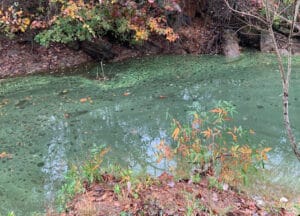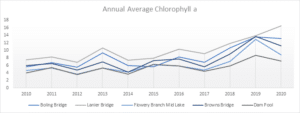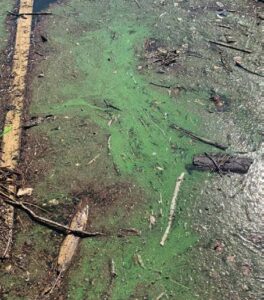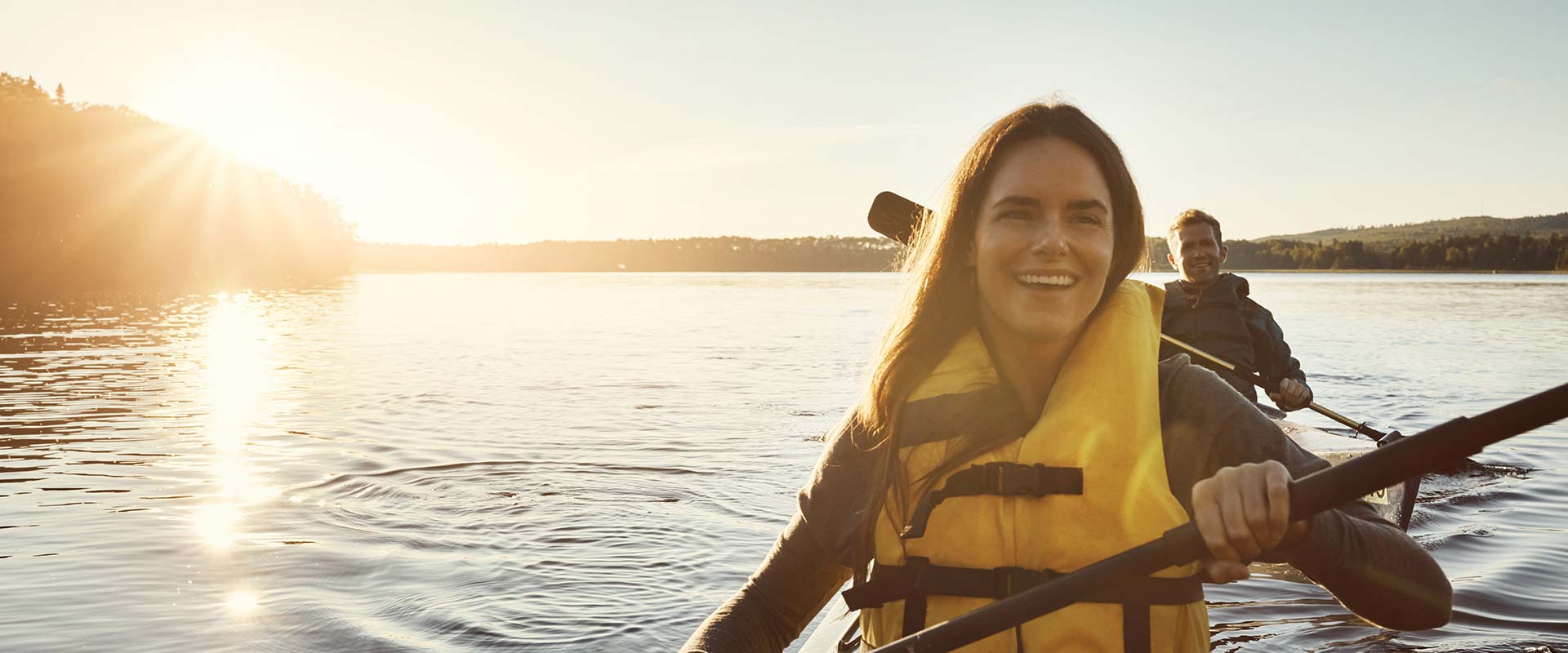The Algae Levels Are Rising and Why You Should Care
CLEAN LAKE, FULL LAKE, SAFE LAKE. You know our mantra and LLA wants you to know what our plan is to support the all-important first element. Over the years, LLA has successfully implemented programs like Adopt-A-Lake, Shore Sweep, ADDV and Erosion and Sedimentation to all work together to ensure we have a Clean Lake. While these efforts have made an impact, there is much more to be done to ensure the ongoing and future health of Lake Lanier. Trash, nutrients, sedimentation, harsh chemicals and E. coli all deteriorate Lanier’s water quality. Below we have detailed the issues with three of these pollutants. As LLA members, we ask that you take a look at these concerns and join us in our Clean Lake Campaign efforts to keep Lake Lanier clean for generations to come.
EROSION AND SEDIMENTATION
Sediment entering the lake clogs wildlife habitat and carries with it phosphorous and nitrogen into the lake. Once the sediment reaches Lanier, the nutrients attached to the soil are released into the water. This contributes to the nutrient loading of the lake detailed below, exacerbating algae levels.
E. COLI
Another form of pollution that has potentially serious health effects is Escherichia coli (E. coli), a bacteria that normally lives in the intestines of warm blooded animals. While E. coli is usually harmless or causes only relatively brief sickness, a few strains can cause severe symptoms and require medical attention especially for children or the elderly. E-coli does not typically thrive in a lake environment, though it is suggested to avoid contact with the water 24-48 hours after a heavy rain. E-coli can be found along shorelines where an abundance of wildlife, such as geese are located on the shoreline or upstream. We can all help control the presence of E. coli in the lake. While geese, cattle, and chicken houses contribute. Pet waste, septic tanks, sewer spills, and improperly operated marine toilets are also sources. People can help by cleaning up after their pets and by properly maintaining and operating septic systems and marine toilets.

ALGAE & PHOSPHOROUS
The most concerning factors negatively affecting Lake Lanier’s water quality is an increasing level of phosphorus in the water, which in turn is causing an increase in algae growth. Algae are photosynthetic aquatic organisms that range from microscopic,
single-celled organisms to large seaweeds. An “algae bloom” is a rapid increase in the population of algae and is primarily caused by an excessive volume of nutrients such as phosphorus and nitrogen. An abundance of algae can also cause harmless yet disagreeable taste and odor issues in our drinking water. The majority of algae in Lake Lanier is non filamentous nontoxic algae species. This means even at higher levels it does not create a mat on the water but can be seen as a green tint in the water.
Chlorophyll a Testing
We monitor algae levels by measuring levels of Chlorophyll a, a pigment contained in plants, algae, and cyanobacteria. Chlorophyll a is often used as a surrogate for algae growth because it provides a ready means of monitoring algae levels. Chlorophyll a levels vary with water volume and temperature, and are usually higher when temperatures and rainfall are high. Lake Lanier’s Chlorophyll a readings have been rising, especially since 2017. The testing results are detailed in the following graph. The northern sections of the lake, Bolling Bridge and Lanier Bridge have the highest allowed concentrations, 10ppm with the allowable limits decreasing to 5ppm at Buford Dam. This decrease relates to the volume of water to nutrient concentrations in each location.
In Lake Lanier, phosphorus has been identified as the primary cause of the increase in algae. High phosphorus content in Lanier is largely due to nonpoint source runoff from urban areas (e.g., streets, parking lots, and lawns that have been fertilized) and agricultural lands (e.g., cattle, fields and chicken houses). Point sources such as wastewater treatment facilities also contribute. The state produced a document that details the sources of phosphorus from around the lake and sets the maximum levels of phosphorous that should enter Lake Lanier to still maintain the lake’s water quality. This document is a good guideline for where to approach the issue of rising phosphorous levels, though it does not create a direct road map to a solution.

 Blue-Green Algae Blooms appeared in Lanier for the first time in 2020.
Blue-Green Algae Blooms appeared in Lanier for the first time in 2020.
One of the more dangerous forms of algae is various species of Cyanobacteria, the so-called blue-green algae. Blue-Green
algae blooms can produce toxins. In 2020 there were nine small blue-green algae blooms visually confirmed on Lake Lanier. One bloom was tested and verified to be Cyanobacteria which was producing a low level of the toxin microcystin. The significance of this lies in the fact that this was the first time that these types of blooms were documented in Lanier. Certain species of algae can produce toxins that can sicken or kill dogs, fish, mammals, and birds, and in extreme cases may cause human illness. These blooms were all located in isolated areas and are very visually distinct. They are bright green in nature and appear almost like spilled paint in the water. The fact that they are so distinct allows them to be easily avoided. Please report to us if you see any suspected blue-green blooms.
The water quality of Lake Lanier is a growing concern, but the lake is still safe to use for swimming, boating and as a source of properly sanitized drinking water. LLA has been studying the situation and strategizing on how it can not only help maintain a CLEAN LAKE but help restore Lake Lanier to lower levels of Chlorophyll a, phosphorus, E. coli, and other deleterious substances. Our strategies will be evolving as we gather more knowledge and expertise, but our goal is to protect Lake Lanier and all its users.
OUR ACTION PLAN
Collaboration – LLA has long worked with local and state governments such as EPD and local County and City water management agencies on all three elements of our mantra. But we will be expanding our work with not only government officials but other nonprofits and public and private organizations that can help us in our quest to keep the lake clean. We will also be encouraging local governments to adopt best practices, like Hall County’s newly-revised storm water ordinance requiring double-row silt fences and hay bales on all developments bordering the lake.
Education – LLA members must be actors, too – it will take all of us working together to find and be the solution. There are practical steps you can take to improve water quality; including proper maintenance of marine toilets, careful consideration of lawn treatments and cleaners used on boats or docks. We will support these actions by raising awareness in the lake community about all Clean Lake issues through webinars, our new website, our newsletter, and civic organization meetings.
Member Action – One of LLA’s longtime programs has been the Clean Lake Pledge, previously the homeowners pledge, will detail meaningful steps which homeowners throughout the Lake Lanier watershed can take to protect and preserve the quality of Lake Lanier’s water. The newly revised Clean Lake Pledge will be available to take starting at our Annual Member Celebration on April 17.
Report a Problem – Using the new LLA website, lake lovers can report a water quality problem on the lake. Once problems are identified LLA collaborates with the respective agencies and organizations to address the concern whenever possible. This is an on-going effort and one we will further develop through the See Something Say Something program rolling out this Spring.
Our preferred course of action is to be a solution builder. We seek to work with LLA members, government authorities and local leaders to find, develop, and implement solutions that are durable, effective, and beneficial for the entire Lake Lanier community. The goal is to ensure that Lake Lanier’s water is protected for generations to come, and LLA is committed to being part of the solution, whatever that requires. We encourage you to share this information with your friends and neighbors around the lake. We hope you will support us in this effort and stake your claim to preserving a CLEAN LAKE.

